
 Text Copyright 2014 Karl Knopf. Design and Concept 2014 Ulysses Press and its licensors. Photographs copyright 2014 Rapt Productions. All rights reserved. Any unauthorized duplication in whole or in part or dissemination of this edition by any means (including but not limited to photocopying, electronic devices, digital versions, and the Internet) will be prosecuted to the fullest extent of the law. Published in the United States by Ulysses Press P.O.
Text Copyright 2014 Karl Knopf. Design and Concept 2014 Ulysses Press and its licensors. Photographs copyright 2014 Rapt Productions. All rights reserved. Any unauthorized duplication in whole or in part or dissemination of this edition by any means (including but not limited to photocopying, electronic devices, digital versions, and the Internet) will be prosecuted to the fullest extent of the law. Published in the United States by Ulysses Press P.O.
Box 3440 Berkeley, CA 94703 www.ulyssespress.com ISBN: 978-1-61243-345-5 Library of Congress Control Number 2013922722 10 9 8 7 6 5 4 3 2 1 Acquisitions: Kelly Reed Managing editor: Claire Chun Editor: Lily Chou Proofreader: Elyce Berrigan-Dunlop Indexer: Sayre Van Young Production: Jake Flaherty Cover design: what!design @ whatweb.com Cover photographs: front Olesya Feketa/shutterstock.com; back Rapt Productions Interior photographs: Rapt Productions except on page 6 marema/shutterstock.com Models: Michael Ciociola, Nadia Velasquez Make-up: Sabrina Foster Distributed by Publishers Group West Please Note This book has been written and published strictly for informational purposes, and in no way should be used as a substitute for actual instruction with qualified professionals. The author and publisher are providing you with information in this work so that you can have the knowledge and can choose, at your own risk, to act on that knowledge. The author and publisher also urge all readers to be aware of their health status and to consult health care professionals before beginning any health program. contents 

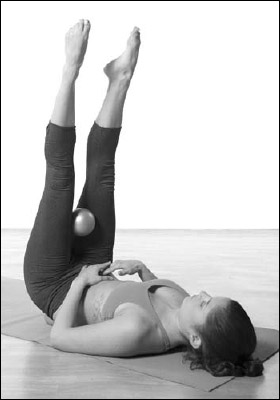 Pain is the great equalizer, whether were rich or poor, fit or unfit, young or old. Acute pain can cripple you while chronic pain can devastate you. Pain is the main complaint for 40 percent of visits to the family physician.
Pain is the great equalizer, whether were rich or poor, fit or unfit, young or old. Acute pain can cripple you while chronic pain can devastate you. Pain is the main complaint for 40 percent of visits to the family physician.
Only 50 percent of those visits have satisfactory outcomes, leaving patients wondering what the cause id and what they can do. Sometimes poor posture and improper body mechanics, along with overtraining specific muscles, lead to increased muscle tension and harmful body alignment. Other times trauma to an area can intensify muscle tension, which can contribute to muscle spasms. If these dysfunctions arent addressed properly, they can lead to reduced mobility and chronic physical problems. Frequently theres no cure for the pain, only ways to manage it. The key is to find a method that provides the most benefit for the least amount of risk.
The therapy ball is considered one of those options. Each of us has our own unique threshold for pain. Although theres no universal cure-all that can rid us of these physical annoyances for good, there are many options, such as medication and massage, that can ease our discomfort. There are even methods we can apply ourselves. Youve probably used a foam roller to loosen tight hamstrings, release your back, and improve your balance. Did you know that the balls you play with, anything from golf balls to basketballs, can provide the same benefits, in addition to keeping your heart healthy? With therapy balls, you can roll your way to better health! Therapy Ball Workbook explains how you can use practically any balllarge or small, soft or hardas a therapy ball.
It also presents exercises for physical rehab, core strengthening, posture correction, general conditioning, self-massage and stress reliefall ways to maintain a flexible, strong body and prevent future injury. 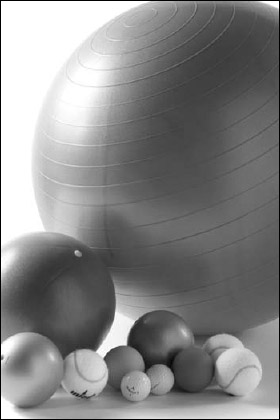 There are a few balls on the market earmarked for massage therapy and a number that actually call themselves fitness and therapy balls. However, as far as Therapy Ball Workbook is concerned, no single type of ball is the perfect therapy ball. In fact, most balls used for general fitness and recreation can be repurposed for therapy, be it massage, rehab or conditioning. The size, shape and density of the ball you select should be determined by the goal of your session and, if applicable, the area of your body you aim to address. In general, small balls (between 1 to 6 inches) with some give, such as tennis balls and softballs, are good candidates for self-massage and muscle release.
There are a few balls on the market earmarked for massage therapy and a number that actually call themselves fitness and therapy balls. However, as far as Therapy Ball Workbook is concerned, no single type of ball is the perfect therapy ball. In fact, most balls used for general fitness and recreation can be repurposed for therapy, be it massage, rehab or conditioning. The size, shape and density of the ball you select should be determined by the goal of your session and, if applicable, the area of your body you aim to address. In general, small balls (between 1 to 6 inches) with some give, such as tennis balls and softballs, are good candidates for self-massage and muscle release.
If your muscles require a firmer touch, try denser balls such as those used in golf and lacrosse. Smaller balls have the benefit of getting into areas that other tools (pressure point wand, foam rollers) have a hard time reaching. Balls with some give can also be used for core strengthening and conditioningthe squishier the ball, the more unstable it usually is. The stability ball (also known as the Swiss or Pilates ball) is a popular core-strengthening tool and perhaps the best known of the therapy balls. It comes in several sizes and can be inflated to your desired firmness. You might also see mini versions of the stability ball (often called fitness, therapy and yoga balls) used in Pilates and core-training classes.
These balls typically run 4 to 10 inches and are often kept underinflated. Some specialized balls have knobs and nubs to stimulate circulation, which work well for the hands and feet. Others have bumpy surfaces to promote sensory stimulation, while those with a hard, smooth surface are designed to be held in your hands to provide better trigger-point tension relief. These specialty balls may be found at sporting-goods, yoga, Pilates and physical therapy stores. The nice thing about using balls for therapy is that you probably have at least one lying around the house. 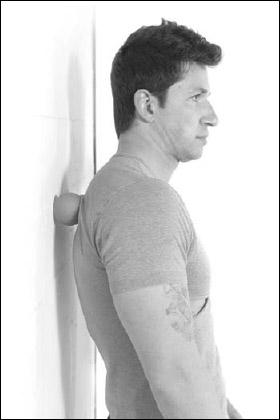 Too often in the world of fitness, people focus on developing stronger muscles or improving performance in a sport but neglect the subtler aspects of fitness such as stretching and flexibility.
Too often in the world of fitness, people focus on developing stronger muscles or improving performance in a sport but neglect the subtler aspects of fitness such as stretching and flexibility.  Too often in the world of fitness, people focus on developing stronger muscles or improving performance in a sport but neglect the subtler aspects of fitness such as stretching and flexibility.
Too often in the world of fitness, people focus on developing stronger muscles or improving performance in a sport but neglect the subtler aspects of fitness such as stretching and flexibility.
Most exercise programs and sports place emphasis on one particular muscle group, thus causing muscle imbalances that create more inflexibility. The key to staying healthy and functional is to understand the interplay between all the characteristics of the body that are critical to optimal fitness, function and wellness. Being too strong and tight is just as bad as being too flexible. Our bodies are like a symphony; each part has a special role that needs to be played at the correct time and be well tuned in order to produce a beautiful harmony. Its very difficult for the average fitness buff to understand the delicate relationship between dose and response. Too many people believe that more and harder is always better.
Its the enlightened person who understands the balance between physical activity, rest and mindful movements. The longer I work with people of all levels, the more I realize that having a firm yet supple body is the key to achieving functional fitness and a pain-free life. Whether youre sedentary or very active, a daily routine of stretching and muscle relaxation is critical in preventing joint dysfunctions and chronic pain. Therapy balls are wonderful, versatile tools that can improve mobility and flexibility, prevent possible injury and release muscular tension while also adding diversity to your standard exercise program. Tennis, golf, lacrosse and softballs are perhaps most commonly used for self-massage, the goal of which is to break up interwoven muscle fibers and help move oxygenated blood into the muscles. Softer, squishier balls, when used during common exercises like push-ups and back extensions, provide an unstable surface that challenges the central nervous system to maintain control.
Next page

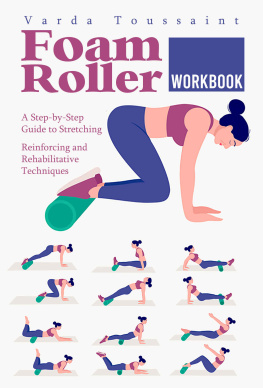
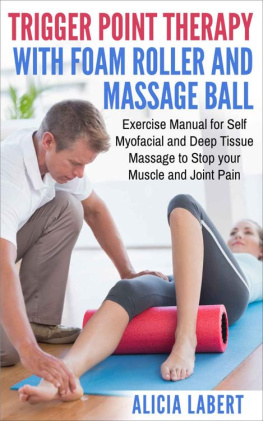


 Pain is the great equalizer, whether were rich or poor, fit or unfit, young or old. Acute pain can cripple you while chronic pain can devastate you. Pain is the main complaint for 40 percent of visits to the family physician.
Pain is the great equalizer, whether were rich or poor, fit or unfit, young or old. Acute pain can cripple you while chronic pain can devastate you. Pain is the main complaint for 40 percent of visits to the family physician. There are a few balls on the market earmarked for massage therapy and a number that actually call themselves fitness and therapy balls. However, as far as Therapy Ball Workbook is concerned, no single type of ball is the perfect therapy ball. In fact, most balls used for general fitness and recreation can be repurposed for therapy, be it massage, rehab or conditioning. The size, shape and density of the ball you select should be determined by the goal of your session and, if applicable, the area of your body you aim to address. In general, small balls (between 1 to 6 inches) with some give, such as tennis balls and softballs, are good candidates for self-massage and muscle release.
There are a few balls on the market earmarked for massage therapy and a number that actually call themselves fitness and therapy balls. However, as far as Therapy Ball Workbook is concerned, no single type of ball is the perfect therapy ball. In fact, most balls used for general fitness and recreation can be repurposed for therapy, be it massage, rehab or conditioning. The size, shape and density of the ball you select should be determined by the goal of your session and, if applicable, the area of your body you aim to address. In general, small balls (between 1 to 6 inches) with some give, such as tennis balls and softballs, are good candidates for self-massage and muscle release. Too often in the world of fitness, people focus on developing stronger muscles or improving performance in a sport but neglect the subtler aspects of fitness such as stretching and flexibility.
Too often in the world of fitness, people focus on developing stronger muscles or improving performance in a sport but neglect the subtler aspects of fitness such as stretching and flexibility.